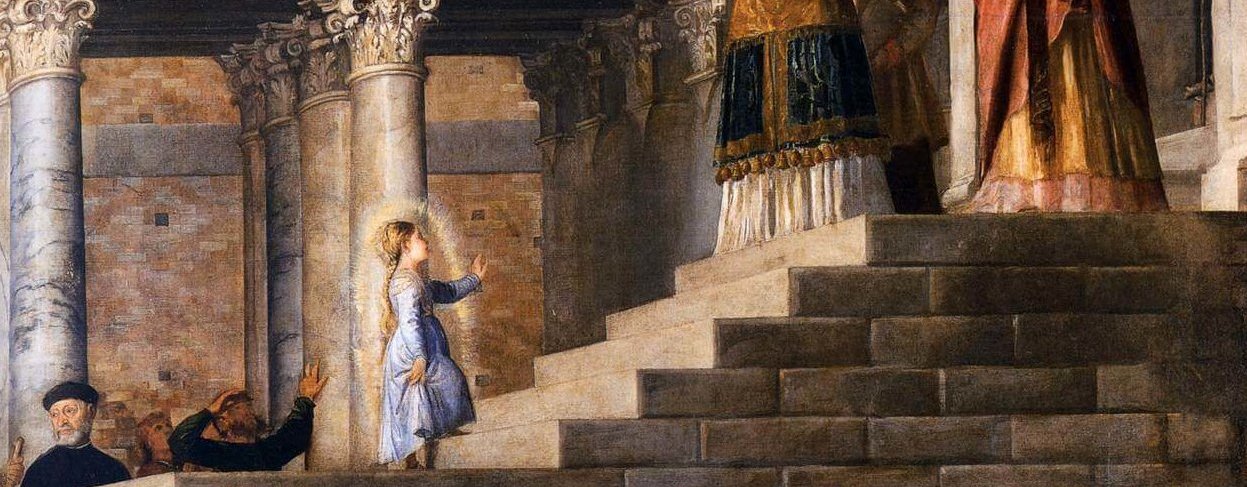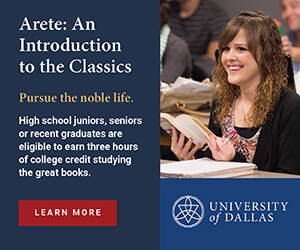The Presentation of Mary, celebrated today, is traditionally found in the Protoevangelium of James – a non-canonical gospel account from around 200 AD. This text reveals to us the names of Mary’s parents, Anne and Joachim, and in its seventh chapter gives us an event found nowhere else in early accounts.
At the young age of three, Mary is presented at the Temple and received by a priest with words that seem to foreshadow her later Magnificat: “The Lord has magnified thy name in all generations. In thee, the Lord will manifest His redemption to the sons of Israel.”
But if the account isn’t canon, why do we celebrate today? Father Edward Looney, mariologist and author, has some answers.
“The Protoevangelium of James is a valuable text, even if it’s apocryphal. There are some fantastical things, but it gives us valuable information and tells us what people are thinking about at that time in history, in the Church emerging.”
Pope Saint Paul VI says the same in his 1974 apostolic exhortation Marialis Cultus. Though the account might not be biblical canon, it “presents lofty and exemplary values” that provided seed for rich traditions to come – many of which were proclaimed by foundational patriarchs like Gregory of Nyssa and John Chrysostom. Because of these, the Presentation of Mary (one of the Dodecaorton, the twelve great feasts in Eastern Orthodoxy) was celebrated by Catholics everywhere long before it became a universal feast in either Church.
Whether or not this event historically happened – the tradition of children’s presentations in the Temple is strong, but no current record suggests this for Mary herself – this feast emphasizes Mary’s dedication to God as continuing past her conception and birth. The connection between this event and Mary’s early title of Theotókos (“Mother of God”) is prominent: “Mary would have spent time reflecting on the Word of God in the Temple, being taught about it and learning it,” connects Father Looney, “and she becomes the mother of the Logos incarnate.”
Father Looney also highlights a clear association with the upcoming season of Advent. As Mary is prepared through prayer and study “for how God will call her in salvation history… this is her advent, her preparation, for what’s going to come even if she might not know it yet.”
We are encouraged to let Mary’s upbringing, as given to us by centuries of Church history and thought, inspire our own devotions. “Mary gives everything to God. She spends night and day in the Temple praising Him – for us, we can’t do that, but we might be able to make a visit to a church and be sure to find ourselves at Sunday Mass. There’s value in finding ourselves in these holy places.”
Father Looney recommends diving into the writings of early mystics and scholars, like John Chrysostom or mystic Venerable Maria of Ágreda. Using the teachers around us and praying with their work is a sure parallel to what Mary would have done in the Temple day and night. These all allow us to share in the simple joy of Mary’s active, everlasting devotion to her Lord and His will. Let her example guide us to do the same!

Our Lady is celebrated under many names, from popular apparitions to small-town titles. Each reveal something different about the Blessed Mother to us – and affirms what we already know of her love and intercessory power! Deepen your devotion to Our Lady with Miracles, Mysteries, & Mary, a monthly collection of stories, Church teaching, reflections, and so much more – guaranteed to expand your knowledge of Our Blessed Mother. Sign up today to receive this Marian content, right to your inbox, and check out our archive page to catch up on our year of Our Lady!



